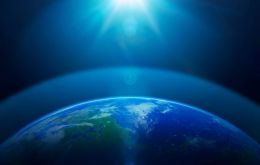MercoPress. South Atlantic News Agency
Tag: ozone
-
Thursday, September 15th 2022 - 10:28 UTC
Ozone for life: 35 years of ozone layer protection

This year, we celebrate 35 years of the Vienna Convention and 35 years of global ozone layer protection. Life on Earth would not be possible without sunlight. But the energy emanating from the sun would be too much for life on Earth to thrive were it not for the ozone layer. This stratospheric layer shields Earth from most of the sun’s harmful ultraviolet radiation. Sunlight makes life possible, but the ozone layer makes life as we know it possible.
-
Wednesday, April 29th 2020 - 09:36 UTC
Ozone layer hole over the Arctic has closed and has been linked to Europe's warmest winter

The largest hole ever observed in the ozone layer over the Arctic has closed, says Copernicus' Atmospheric Monitoring Service. Scientists spotted signs in late March of a rare hole forming and it was thought to be the result of low temperatures at the north pole.
-
Monday, January 29th 2018 - 10:22 UTC
Ozone hole: NASA's satellite confirms 20% less depletion; recovery by 2080

Scientists have shown through direct satellite observations of the ozone hole that levels of ozone-destroying chlorine are declining. Measurements show that the decline in chlorine, resulting from an international ban on chlorine-containing man-made chemicals called chlorofluorocarbons (CFCs), has resulted in about 20% less ozone depletion during the Antarctic winter than there was in 2005, the first year that measurements of chlorine and ozone during the Antarctic winter were made by NASA's Aura satellite.
